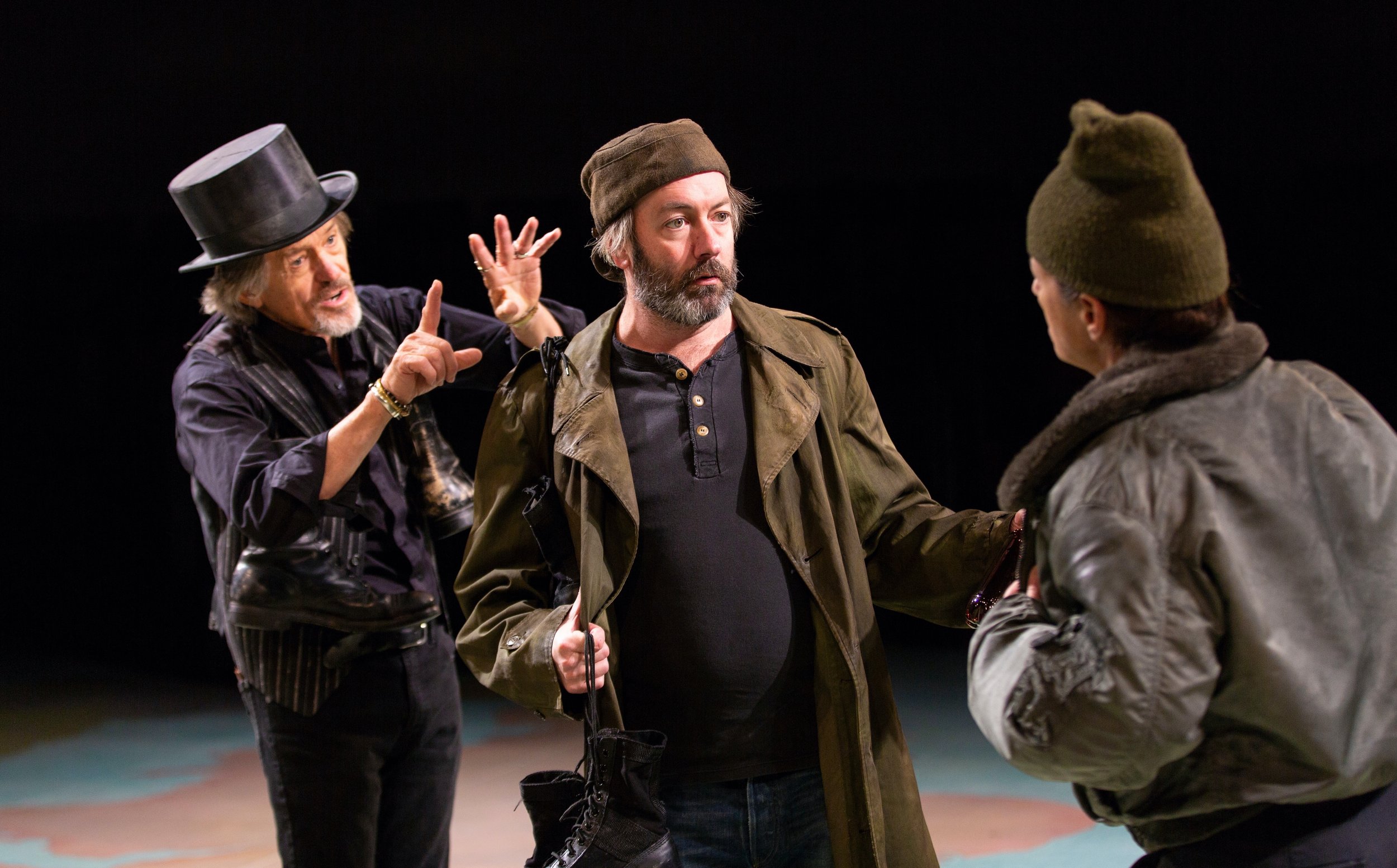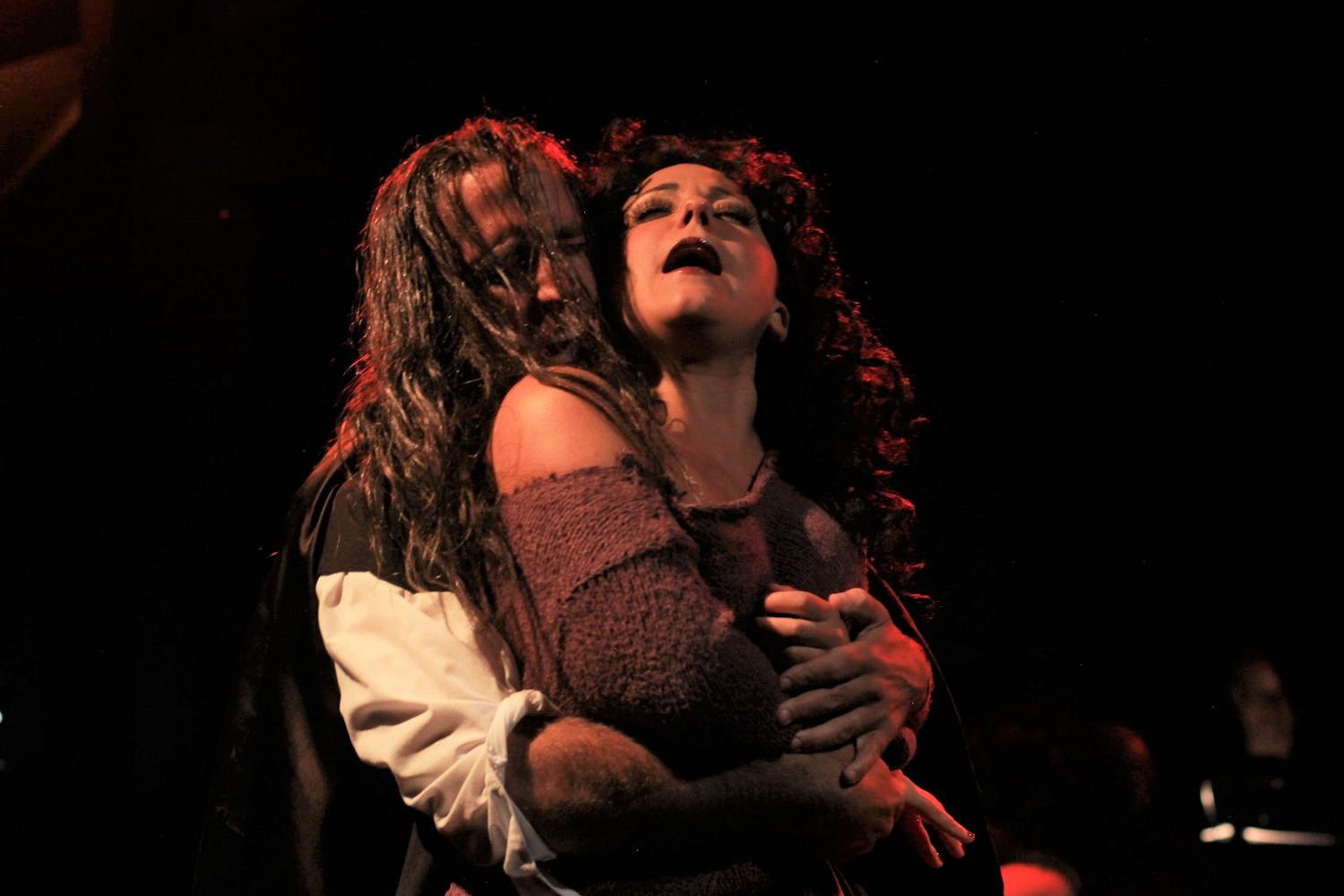Review of It’s Not About My Mother, Yale Cabaret
People mourn in different ways, true, but one of the tasks of surviving someone is having to dispose of all their stuff. This can be an emotionally fraught act, even more so when the partners on the job are estranged half-sisters, born over a decade apart, who have rather different takes on their late mother. It’s Not About My Mother takes familiar ground—children rehearsing a deceased parent’s failings—and, as directed by stage manager Sam Tirrell and enacted by third-year actors Kineta Kunutu and Amandla Jahava, conjures up a celebration of siblings coping.
Midge (Kunutu) is the elder, and she opens the show by opening a box among the dozens in her mom’s packed basement. There she finds a glam jacket that immediately conjures up a memory of Mom (played here by Jahava) as a bitter, chain-smoking live-wire, almost feral in her fierceness. This is going to be tough, we readily assume. Shortly after, storming in like Mom, the Sequel, comes younger sister Nancy (Jahava) who claims she’s twenty-three but acts, around big sister Midge, like a precocious brat age-shifting back to puberty and even earlier. Her latest discovery is how to include “fuck” or “fucking” in every sentence. When she went off to college, Nancy left Midge to deal with Mom all alone, which wasn’t such a change as, we learn, Midge has pretty much been playing mother to both her sister and her mom since age twelve.
It’s Not About My Mother is about making sense of the life that shaped your own. The rifts and gaps between the sisters are the stuff of the play and what makes it work so well, in the Cab’s actual basement space, is the appealing rapport between Kunutu and Jahava. Kunutu plays well the authoritative adult, so that when she falters before her sister’s laser-like vision, things get interesting. Jahava plays Nancy as a bundle of nerves, with so much energy that watching her is almost exhausting. She moves with the abandon of a child who seems not to take the physicality of objects seriously. Together, the two actors create a fascinating back-and-forth between sisters who don’t want to be strangers.
A key moment is Midge’s memory of childhood and a vision of Mom—working as a layout artist for a newspaper—that feels like a fairytale to Nancy (when Nancy was four, Midge was already the employed adult in the house). We don’t know the story of what went wrong with Mom, but we do get the story of how siblings can help each other get out from under the shadow of such a dominant personality. Both sisters are lesbians and Nancy wonders aloud whether it was the lack of men in their lives that clinched the predilection. She’s fond of psych-major summaries of what things mean. Midge isn’t so naïve and remains focused on getting things done and not making more drama than is unavoidable.
At one point, Kunutu transforms into Mom, in a much more together version that the one we saw through Midge’s eyes, and talks in a bantering way with Nancy. The sense of Nancy as the favored sibling, the baby, and, for that reason, the more selfish one, comes through forcefully, a vision learned at her mother’s feet. What Nancy—ultimately—has to give Midge is the use of selfishness. Midge’s life was home with Mom, who seemed to withdraw from the world more and more. The mother’s only consolations, apparently, were cigarettes, clothes, and the music of Stevie Nicks with Fleetwood Mac, the romantic band of the late 1970s.
The play very deftly makes us see Mom and her heroine from the kids’ point of view. The sense comes through loud and clear that life with Mom meant hearing Stevie Nicks ad nauseam, and the play’s use of her songs—quite able to conjure phantoms in their own right—lets us hear how the music of Mom’s good times was the soundtrack of her kids’ childhoods. When—after airing griefs enough—Midge and Nancy set the glam jacket on a sofa with boa and cigarette, then kowtow, the sense of being fully on the same page is joyous.
Finally, even straight-laced Midge lets her adolescent self loose. The show’s climax has Kunutu and Jahava going wild to the tune of Fleetwood Mac’s live rendition of “Rhiannon,” the quintessential Stevie Nicks song, with Jahava vamping with drapes appropriately. It’s an explosion of fellow feeling, a conspiracy between siblings to kick out the jams and toss survivor’s guilt into the reject pile. This is survivor’s glee, an ecstatic goodbye that replaces the memory of their mother’s depressing funeral with a hearty rave that Mom the party girl would’ve embraced. As a send-off, it’s the stuff of rock’n’roll dreams.
It’s Not About My Mother
By Lizzie Milanovich
Directed by Sam Tirrell
Producer: Laura Cornwall; Dramaturg: Rebecca Adelsheim; Scenic Designer: Gerardo Díaz Sánchez; Lighting Designer: Kyra Tamiko Murzyn; Sound Designer: Kathryn Ruvuna; Costume Designer: Stephanie Bahniuk; Stage Manager: Taylor Hoffman; Technical Designer: Austin J. Byrd
Cast: Kineta Kunutu, Amandla Jahava
Yale Cabaret
November 15-17, 2018


































































